Did you know that dehydrating food for long-term storage dates back to ancient times? Native Americans used to salt and dry meat in the sun for later use. In Norway, cod was salted and dried on the rocky shores along the coast. Meanwhile, in Italy, tomatoes were left to dry in the sun on the rooftops of houses.
Nowadays, more and more people are discovering the benefits of food drying. Not only is it one of the cheapest methods for preserving vegetables and fruits, but it also retains the nutrient content and vitamins of the food when done at the right temperature. So why not give it a try and enjoy your favourite foods all year round?
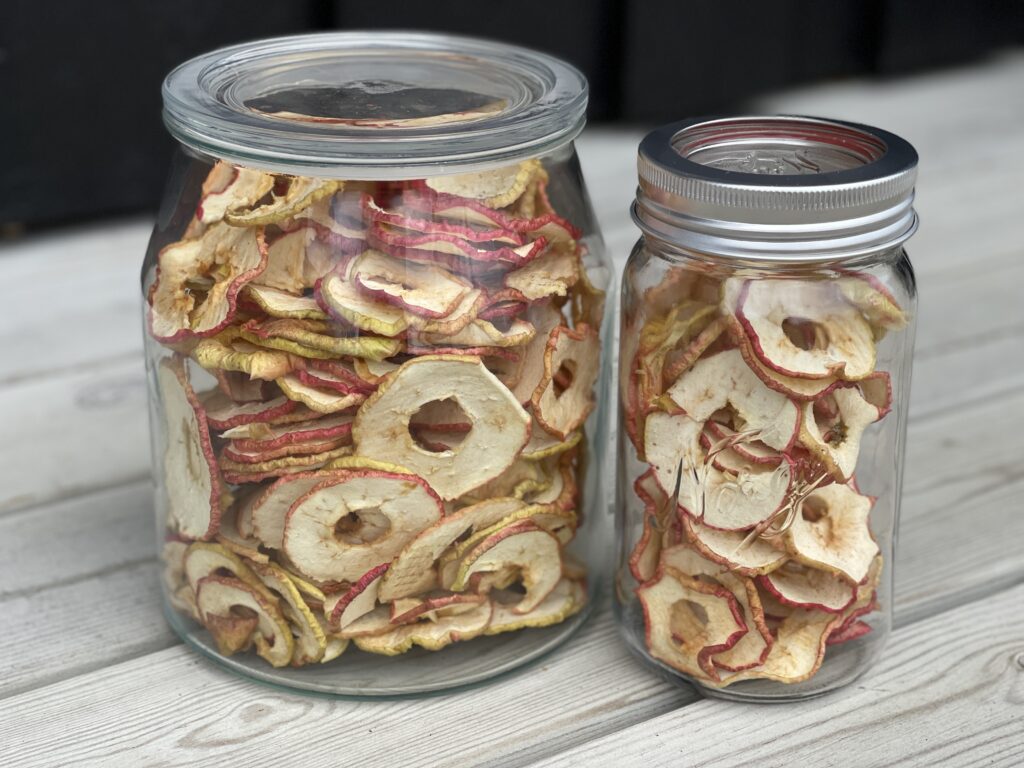
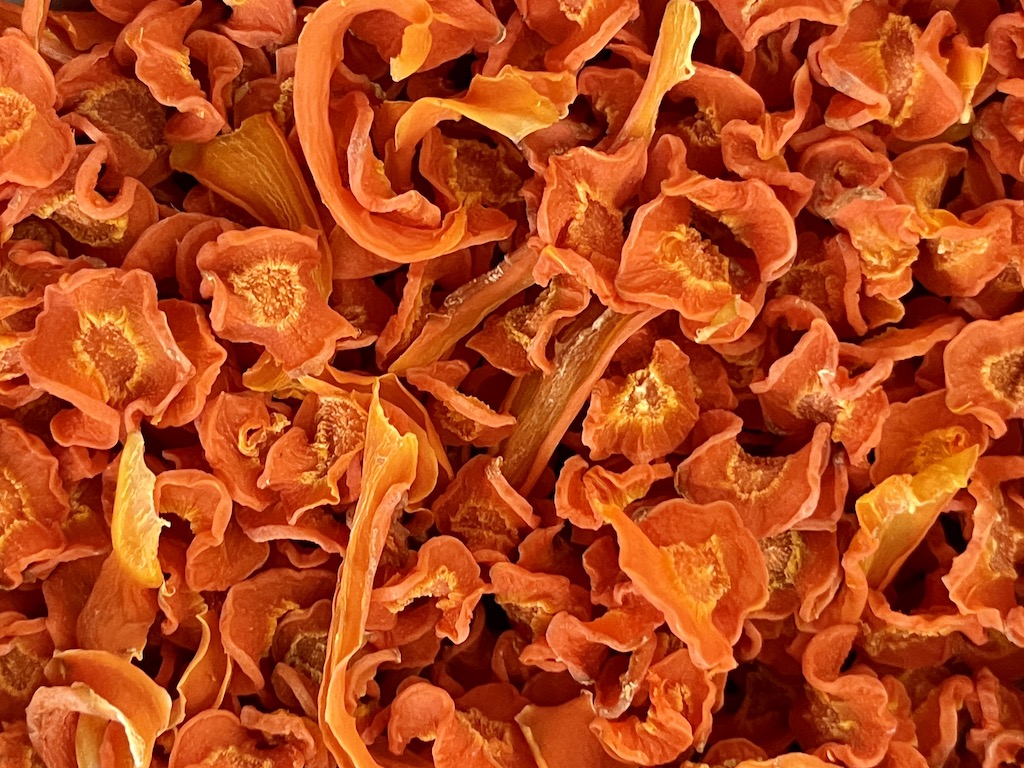
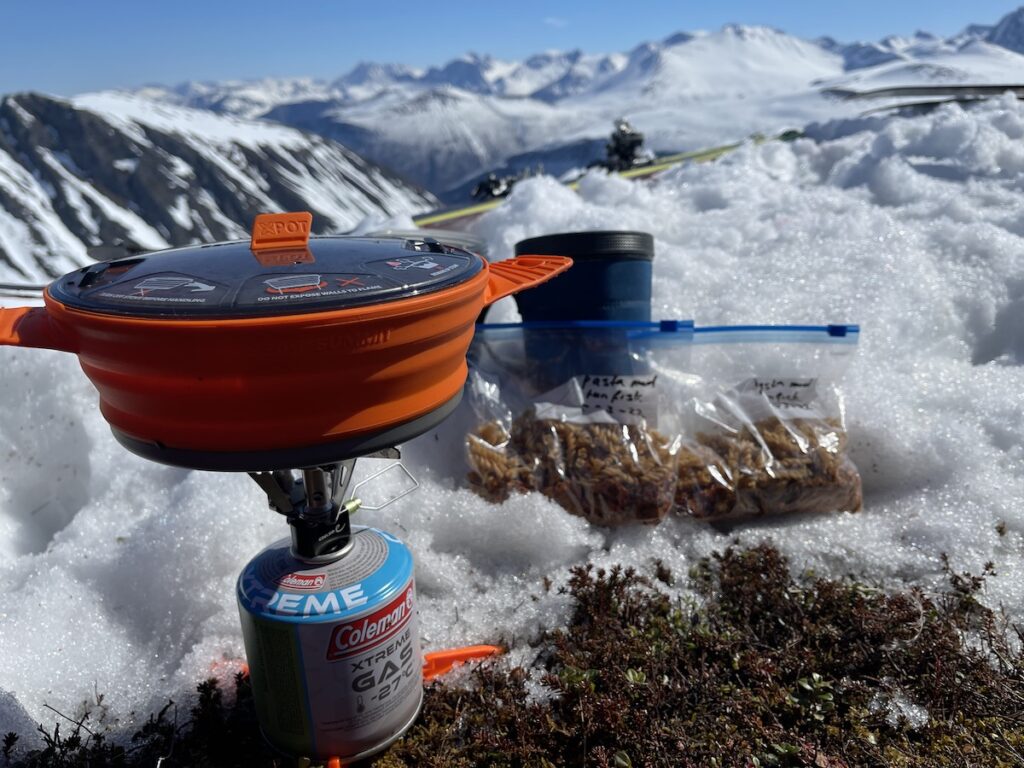
pasta with tuna
Dehydrated hiking food: The practical and delicious choice for outdoor adventurers!
Whether you’re trekking through the wilderness or simply enjoying a day hike, dehydrated hiking food is the perfect meal solution. With a long shelf life, lightweight packaging, and the convenience of adding boiled water, pre-made meals are an easy option. However, they often lack variety, contain additives, and are expensive. That’s why creating your own dried hiking food has become increasingly popular. You’ll save money, have full control over ingredients, and cater to your personal taste buds. Remember, good food can make or break a hike, so why not take the time to craft your perfect meal?
How dehydrating food works
All food contains microorganisms such as bacteria and mold, which can cause spoilage over time. However, these organisms require moisture to thrive. By removing water from the food, spoilage can be prevented. Bacteria and mold may still be present, but without moisture, the decay process comes to a halt. And the food can remain fresh for a long period of time.
Drying food with a food dehydrator
A food dehydrator generates heat, and the fan in the dehydrator blows the warm air over the food that is placed on the drying trays. This removes moisture from the food and preserves it. To ensure a long shelf life, the dried food should be stored properly. This means in airtight containers and kept in a cool, dark place.
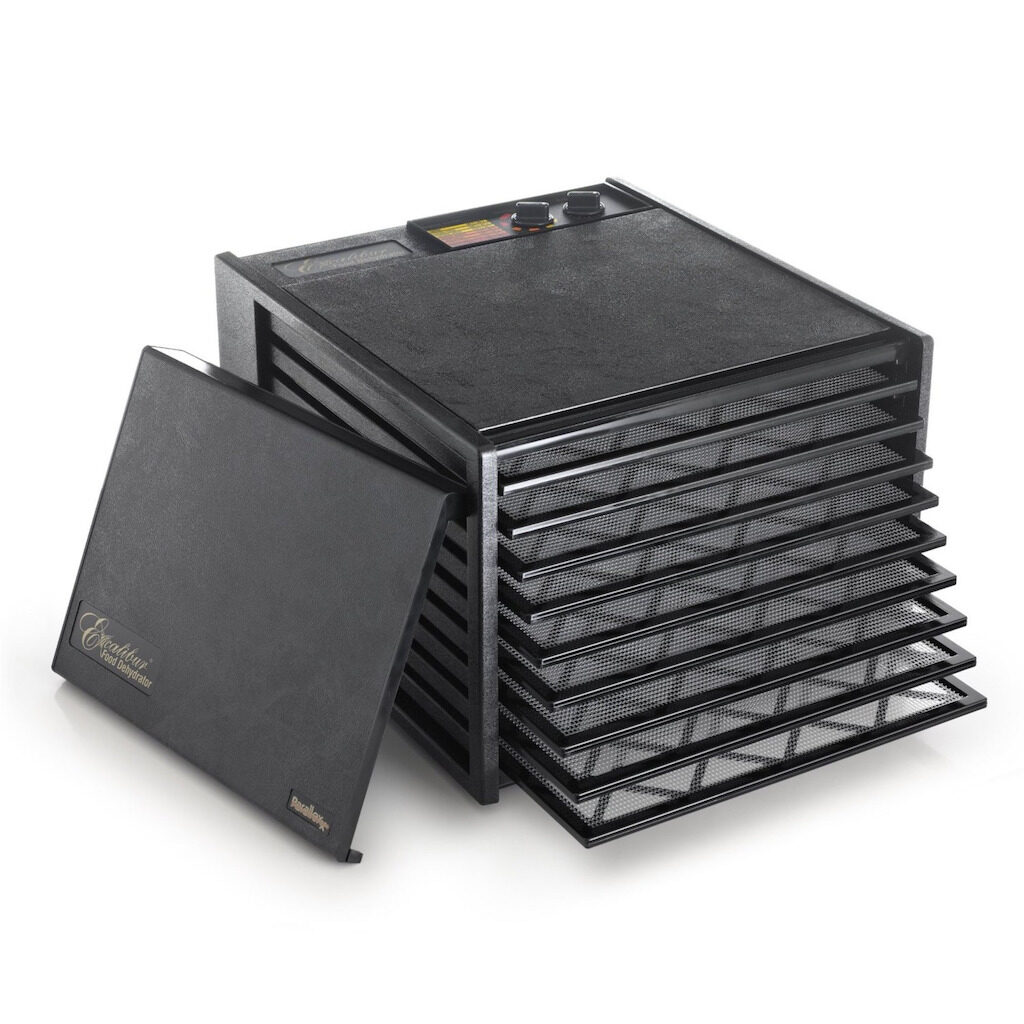
Drying food is a great way to preserve it for later use, and a food dehydrator makes the process easy and efficient. However, it’s important to keep in mind that drying food at the wrong temperature can affect its taste and nutritional value. For instance, some types of food need to be dried at a high temperature to prevent harmful bacteria from growing, while others should be dried at a low temperature to preserve their flavor.
Overview of different types of food that can be dried
I made a practical overview of various types of food that can be dried using a food dehydrator. From herbs and spices to fruits and vegetables, there’s no shortage of tasty and healthy options to choose from. Some types of food have their own page with detailed information on preparation, temperature, and drying time.
Drying herbs
Who doesn’t love the taste and aroma of freshly picked herbs and spices? You can enjoy them all year round by drying them in a your dehydrator! By drying your herbs and spices at a low temperature, you can preserve their rich flavor and aroma for months to come.
One of my favorite herbs to dry is Mojito mint, which I grow right in my own garden. To dry it, I simply remove the stems, lay the leaves out on a drying rack, and let my dehydrator do its job. Although most herbs and spices dry at 35 °C, my dehydrator only goes down to 46 °C – but that doesn’t stop me from getting delicious results! After just 4 hours of drying time, my Mojito mint was perfectly dry and ready to be stored in a jar.
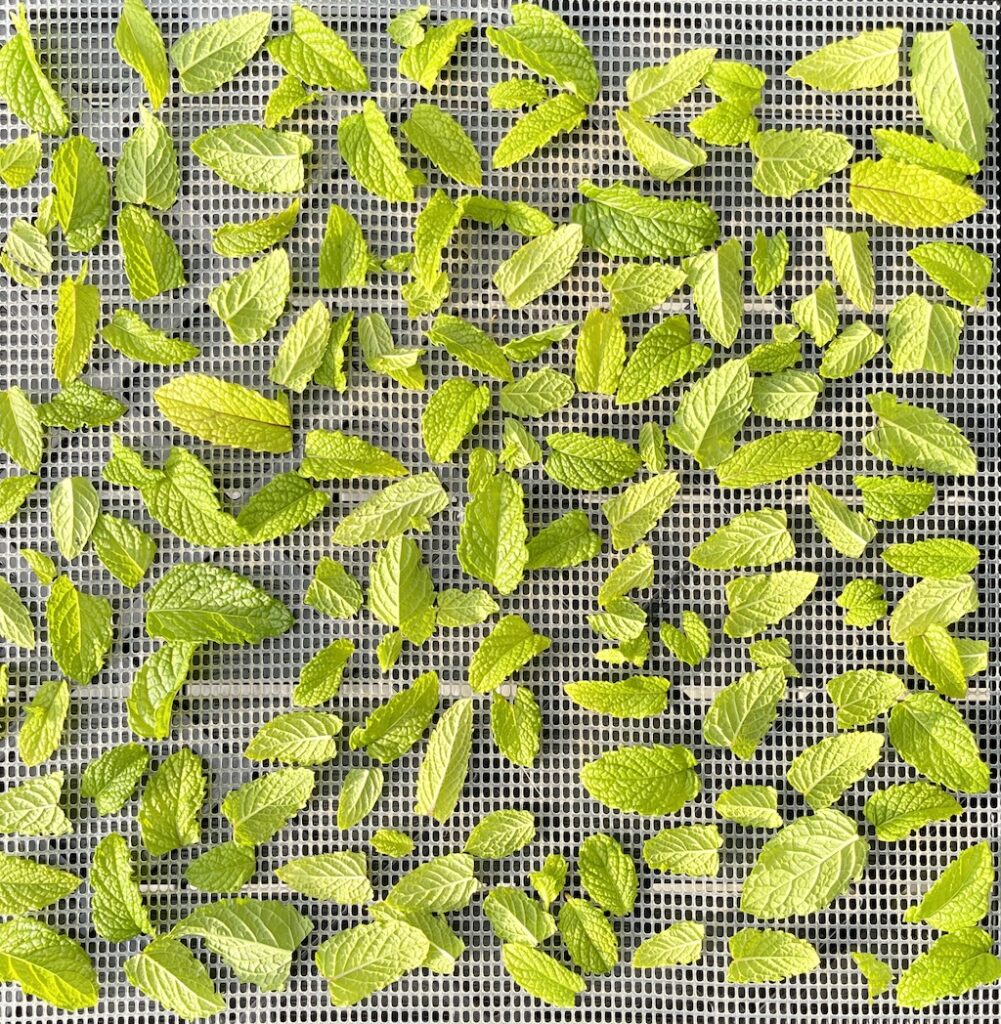
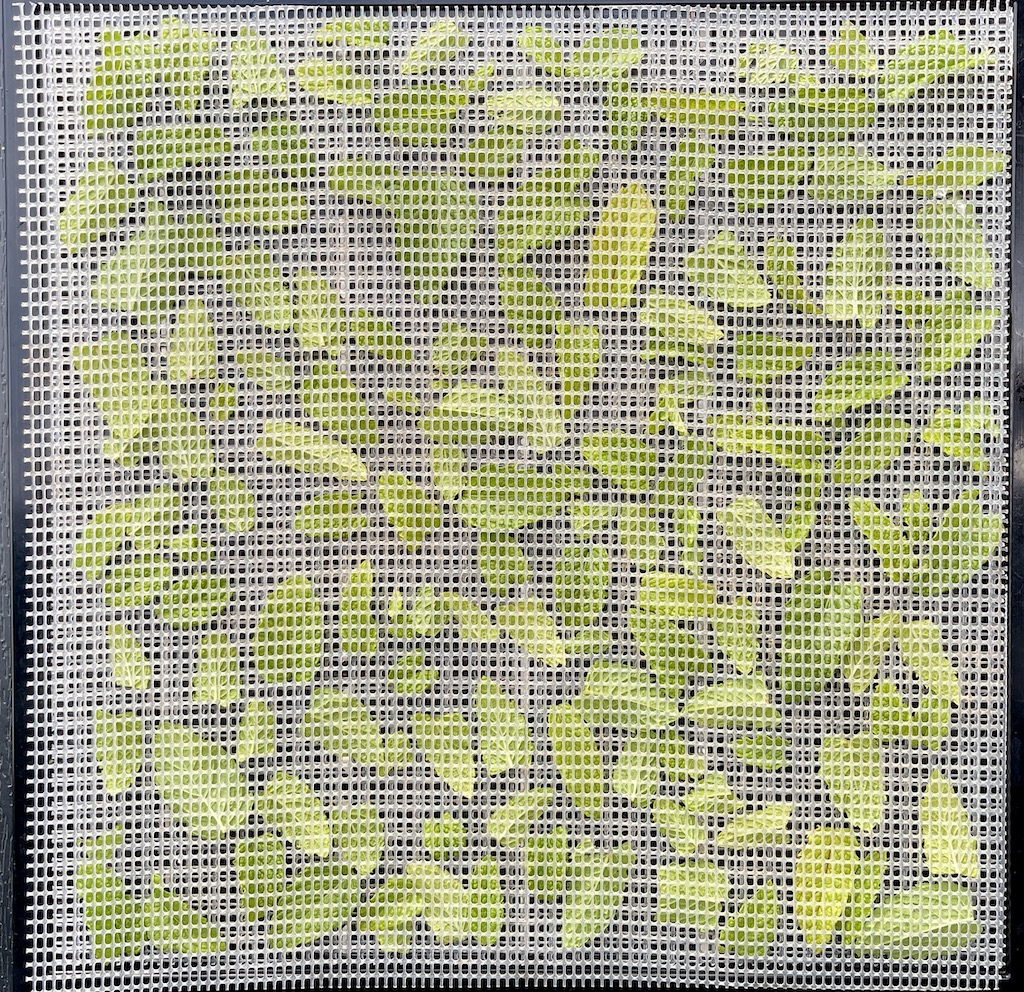
And here’s a pro tip: to keep your herbs from flying around in the dehydrator, simply cover them with a polyscreen tray insert.
Drying vegetables
Did you know that vegetables are perfect for drying? With a few exceptions, most types of vegetables need to be blanched or steamed before being dried in a dehydrator. Once properly dried and stored in airtight containers or mason jars, they can last up to a year or longer! On this page, you will find more information and guidance on various vegetables that can be dried.
Drying fruit
Dried fruit from the store is often loaded with additives and extra sugar. But when you dry your own fruit, you can avoid all that! Properly dried fruit can last up to a year or longer when stored correctly. On this page you will find all the information you need to dry many different types of fruit.
Yogurt rolls / yogurt leather
For yogurt rolls, I recommend using low-fat yogurt or Greek yogurt. The fat content is very low, making them perfect for this purpose. However, keep in mind that their shelf life is considerably shorter than fruit rolls made from mashed fruit. On this page you will find all the information you need for drying yogurt rolls.
Drying meat
Drying meat is an excellent way to preserve it, as long as the meat is lean and contains no more than 10% fat. The fat in the meat can go rancid. When I use ground meat in my dishes, I prefer to choose lean beef with 5% fat content. I also like to use cuts of beef, elk, or reindeer meat for drying. It’s important to note that meat that is to be dried must be cooked thoroughly before the drying process can begin. When raw meat or poultry is dehydrated at home , pathogenic bacteria are likely to survive the dry heat of a warm oven or food dehydrator. Therefor I precook all the meat thoroughly I use in my recipes. More information about this topic you will find her.
Drying fish
It is also possible to dry fish, as long as it is a lean fish such as cod, shrimp, and tuna. The fish should be thoroughly cooked before drying for the same reason as the meat. Sometimes I use salmon in my outdoor meals. Since salmon contains a lot of fat, its shelf life is very limited, and the meal should always be frozen until it is needed.
Drying nuts and seeds
Nuts and seeds are packed with healthy nutrients and unsaturated fats, making them an essential part of a healthy diet. I love incorporating various types of nuts and seeds into my breakfast cereals, snacks, and trail mixes to boost their nutritional. Soaking nuts overnight and then drying them makes them incredibly crispy and delicious. This process also may remove anti-nutrients, making digestion and nutrient absorption easier for the body.
how to soak and dry nuts and seeds
Soak nuts and seeds in water overnight or for 12 hours. Use 2 to 3 tablespoons of apple cider vinegar per liter of water. Make sure the nuts and seeds are completely covered by the water.
Rinse the nuts and seeds thoroughly under cold water and let them drain in a colander. Spread the nuts and seeds out evenly over drying trays and dry them for 12 to 24 hours at a temperature range of 46 to 52 °C.
Once dried, store the nuts and seeds in airtight containers or mason jars to maintain their freshness.
Drying pasta and rice
Drying pasta and rice may seem unnecessary since they are already dried when you purchase them from the store. However, it can be beneficial to dry them beforehand. Typically, rice needs to be boiled for 15 to 20 minutes and pasta for 8 to 10 minutes. But if you precook and dry them in a food dehydrator, all you need to do on the trail is add boiled water and wait for 15 minutes until the food is ready. This method not only saves fuel but also reduces cooking time, making it a practical option for outdoor enthusiasts.
How to dry pasta
Boil the pasta following the instructions on the packaging. Afterward, rinse the pasta under cold water and let it drain in a colander. Then, spread the pasta evenly over one or multiple drying trays without overlapping them.
- temperature: 57 °C
- drying time: 4-6 hours
How to dry rice
Cook the rice according to the instructions. Once cooked, spread the rice evenly over one or multiple drying trays using Paraflexx drying sheets.
- Tempeature: 63 °C
- Drying time brown rice: 5-8 hours
- Drying time for white rice: 4-6 hours
Dried pasta and rice should be stored in mason jars or airtight containers.
Dairy products
While dairy products like cheese, butter, sour cream, and cream are not suitable for drying due to their high fat content, I sometimes use light cream in my recipes. Keep in mind that the shelf life of these dishes is shorter, so I freeze them until I’m ready to enjoy them. The same goes for coconut milk – it’s not ideal for drying, but the light version can be used in moderation.
Temperature tabel
| Vegetables | 52 to 57 °C |
| Fruit | 57 °C |
| Meat (fried or boiled) | 63 °C |
| Fish (fried or boiled) | 63 °C |
| Fruit leather | 57 °C |
| Pasta and rice | 63 °C |
| Nuts and seeds | 46-52 °C |
Drying complete meals with various ingredients
You can dry entire meals as long as the ingredients can be dehydrated and you avoid using excessive amounts of fat during preparation. Adjust the drying temperature based on the ingredient that requires the highest temperature. Keep in mind that the shelf life of the meal will be determined by the ingredient with the shortest storage time
Different ways for dehydrating backpacking meals:
Method 1:
You can prepare a whole meal, dry it, and divide it into portions. Examples on this website are Chili con carne, Game stew, Curry stew, etc. I mostly use this method.
Method 2:
It’s also possible to dry the ingredients separately. You can dry vegetables, meat, pasta, rice, or potatoes separately. Afterwards, you can mix them yourself for your dinner. An example of such a meal is vegetable mash with minced meat and couscous salad with mint and pine nuts.
Tips and tricks
I also recommend checking out the “Tips and Tricks” section as well. This section is packed with valuable information that can help you dry a wide variety of foods and meals. Whether you’re a seasoned pro or just starting out, you’re sure to find useful tips and insights to guide you along the way.
- Food dehydrator
While an oven with a fan can be used for drying food, I personally prefer using a food dehydrator. If you’re interested in purchasing a food dehydrator or want to learn more about using one, be sure to check out the information provided under the “food dehydrator” tab. You’ll find helpful tips and advice to guide you in your decision-making process. - Storage and shelf life
Properly storing dried food can significantly prolong its shelf life. Dried vegetables can stay fresh for over a year, and dried fruit can last for a year or even longer. For further information on this topic, be sure to visit the “advice and tips” section. - Rehydration
There are several ways to rehydrate food. Under the rehydration on trail, you can read about how I rehydrate my meals.
Recipes
In the “Recipes” section, you’ll discover comprehensive descriptions of a wide range of recipes. You’ll learn about the preparation, drying, and storage processes, as well as the quantity of water needed to rehydrate the food. The information is accompanied by ample illustrations, with images showcasing the food both before and after drying. Occasionally, I also provide video demonstrations.
I’m constantly developing new recipes and updating the section regularly, so it’s worth keeping an eye out for the latest additions! The recipes are organized into the following categories:
- Dinners and lunches
- Soups
- Breakfasts
- Cold salads
- snacks
- Fruit rolls / fruit leather
- Yogurt rolls / yogurt leather
Getting started
If you’re new to the world of food dehydration, I suggest starting with drying fruits and vegetables. Once you’ve become comfortable with the process and your food dehydrator, you can gradually move on to more complex dishes.
Drying food isn’t just for hikers looking to make their own dehydrated meals. Snacks, fruit rolls, and dried nuts can be enjoyed on a daily basis, too. If you have a garden, food dehydration is an excellent method for preserving your harvest for future use. You can also use a food dehydrator to make yogurt, crackers, dry bread dough, and even to dry flowers. Additionally, you can make fruit and vegetable powders that can be added to smoothies, sauces, or baked goods. The possibilities are endless, and you can find plenty of inspiration on Excalibur’s Instagram account.
While my website primarily focuses on drying food for backpacking, many of the recipes and techniques can be enjoyed even if you’re not hitting the trails. So, whether you’re a seasoned hiker or just looking for a new way to preserve your produce, food dehydration is a valuable skill to learn!
Questions about drying food
I hope you find my website informative and inspiring! If you have any questions or concerns, please don’t hesitate to reach out to me. I’m always happy to help and provide any additional information you may need.
